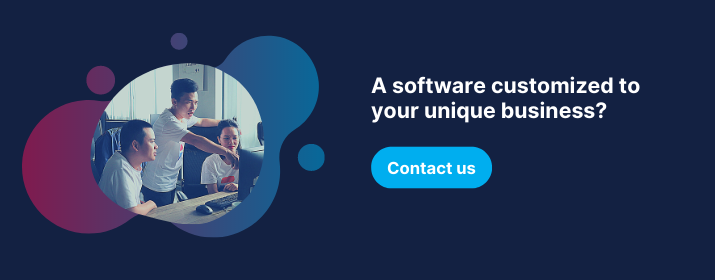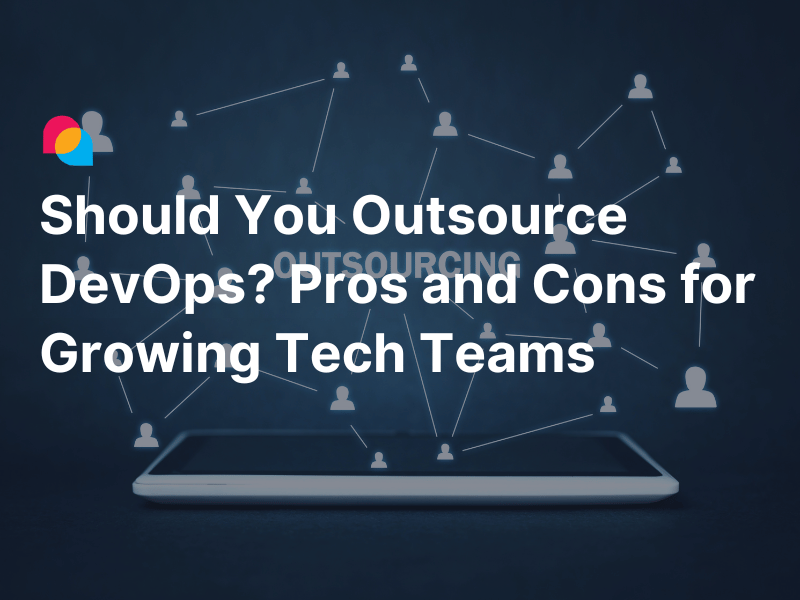The landscape of education is undergoing a monumental shift, transitioning from the chalkboards of traditional classrooms to the digital frontiers of modern learning environments. At the heart of this transformation lies education technology (EdTech), a dynamic field that merges innovative technology with educational theories to enhance learning experiences. But what truly revolutionizes learning in this digital age? The answer lies in custom software, the unsung hero that propels the EdTech revolution, tailoring solutions to meet the unique needs of learners, educators, and institutions alike.
Understanding the Landscape of EdTech
The EdTech Revolution: An Overview
Education technology is not just a buzzword; it's a movement. It represents a fusion of learning and technology, aiming to make education more accessible, effective, and engaging. The global impact of EdTech is unmistakable, with trends indicating a significant shift towards digital learning platforms, online resources, and interactive learning tools. According to the Global Education Technology Market Report by Grand View Research, the sector is expected to expand at a compound annual growth rate (CAGR) of 13.6% from 2023 to 2030, demonstrating the escalating demand for innovative educational solutions.
Custom Software: The Engine Behind Personalized Education
When comparing custom software to off-the-shelf solutions, the advantages become clear. Custom software is tailored to address specific challenges and objectives, offering a level of personalization that generic software can't match. This is why custom software is a game-changer in EdTech, enabling educational institutions to craft unique learning experiences that resonate with their vision and their students' needs. Custom software in education allows for a nuanced approach to learning, addressing individual learning styles and needs, which is pivotal in today's diverse educational landscape.
EdTech Companies: Pioneers in the Digital Learning Arena
EdTech companies are at the forefront of this digital revolution. By profiling successful EdTech companies and understanding their strategies, one can glean insights into the industry's best practices. Collaborating with these pioneers offers numerous benefits, from tapping into their technical expertise to leveraging their innovative solutions to address complex educational challenges. Companies like Coursera and Khan Academy have set benchmarks in personalized learning, demonstrating the significant impact of well-implemented EdTech solutions.
The Pillars of Custom EdTech Software Development
User-Centric Design: Crafting Engaging Learning Experiences
The heart of effective EdTech software lies in its design. Understanding the needs of modern learners and adhering to design principles that captivate and engage is paramount. User-centric design ensures that the software not only meets educational objectives but also provides an enjoyable and intuitive user experience. This approach aligns with the principles outlined in the Web Content Accessibility Guidelines (WCAG), ensuring that digital content is accessible and inclusive for all users, including those with disabilities.
Robust and Scalable Technology Architectures
The backbone of any successful EdTech software is its technology architecture. Choosing the right tech stack is crucial for developing solutions that are not only robust and reliable but also scalable to accommodate growing user bases and evolving educational needs. Technologies such as cloud computing and AI play a pivotal role in this aspect, offering scalable and intelligent solutions that adapt to the changing dynamics of the educational sector.
Data-Driven Insights and Personalization
In today's world, data is king. Leveraging big data to offer personalized learning paths and using analytics to measure the success of EdTech solutions can significantly enhance the learning experience. These data-driven insights enable continuous improvement and refinement of educational content and methodologies. A study by the Center for Digital Education highlights that data analytics in education can lead to improved student outcomes and more informed decision-making by educators.

The Impact of Custom Software on Various Education Stakeholders
Enhancing Teaching Methods for Educators
Custom software in EdTech empowers educators with innovative tools for curriculum design and delivery. By providing detailed feedback and assessment data, teachers can fine-tune their teaching methods, ensuring that each student receives the attention and resources they need to succeed. The integration of technology in teaching also opens doors for continuous professional development, enabling educators to stay abreast of the latest pedagogical approaches and technological advancements.
Empowering Students with Interactive Learning
For students, custom EdTech solutions offer a world of possibilities. From adaptive learning technologies that cater to individual learning styles to the use of gamification and virtual reality, these tools make learning not just effective but also enjoyable and engaging. The interactive nature of these technologies fosters a more immersive learning experience, catering to the diverse needs and preferences of students, ultimately leading to improved engagement and academic performance.
Streamlining Administration and Operations
EdTech goes beyond teaching and learning; it also simplifies administrative tasks and operations. Automating routine tasks and integrating various systems create a unified and efficient education ecosystem, allowing institutions to focus more on their primary goal – educating. The implementation of custom software solutions in administrative processes reduces manual workload, minimizes errors, and enhances the overall efficiency of educational institutions.
The Journey of Custom EdTech Software Development
Conceptualization and Ideation
The development of custom EdTech software begins with a clear understanding of needs and objectives. Through ideation workshops and brainstorming sessions, stakeholders can align their visions and set the stage for a successful development process. This phase is critical in ensuring that the resulting software aligns perfectly with the educational goals and learning outcomes envisioned by the institution. It's a collaborative effort where educators, developers, and students can contribute their insights, leading to a well-rounded and impactful solution.
Design and Development Phases
Embracing an agile methodology ensures that the development process is iterative, flexible, and user-centric. Quality assurance is integral at every stage, guaranteeing that the final product not only meets but exceeds expectations. This phase of development is marked by constant testing, feedback, and iteration, ensuring that the software is not only functional but also user-friendly and effective in meeting its educational objectives. The choice of technology stack during this phase plays a crucial role in the software's performance, security, and scalability.
Deployment and Continuous Improvement
Deploying the software is just the beginning. For EdTech solutions to remain relevant and effective, they must evolve with the changing educational needs. This requires a continuous feedback loop, incorporating user insights and making iterative improvements. Post-deployment, the focus shifts to maintenance, updates, and the addition of new features based on real-world usage and feedback. It's an ongoing process that ensures the software remains at the forefront of educational innovation.

Overcoming Challenges in EdTech Software Development
Navigating Regulatory and Compliance Issues
Understanding and adhering to the legal landscape, especially concerning privacy and data protection, is crucial for global EdTech solutions. A proactive compliance strategy can mitigate risks and ensure smooth operations across borders. With regulations like The EU General Data Protection Regulation (GDPR) and The Children's Online Privacy Protection Act (COPPA) in the United States, EdTech developers must navigate a complex web of legal requirements to ensure their solutions are compliant and secure.
Ensuring Accessibility and Inclusivity
EdTech has the potential to bridge the digital divide, but only if it's designed with accessibility and inclusivity in mind. Following accessibility standards and best practices ensures that education technology is a tool for empowerment, not exclusion. This means designing software that is accessible to individuals with disabilities, supporting multiple languages, and accommodating various learning styles and preferences.
Case Studies and Success Stories
Transformations Achieved by Leading EdTech Companies
Analyzing case studies from leading EdTech companies provides valuable insights into the transformative power of custom software. These success stories serve as a testament to the potential of well-executed EdTech solutions. For instance, companies like Duolingo have revolutionized language learning by leveraging AI and gamification, making learning new languages accessible, fun, and highly effective.
Lessons Learned: Insights from EdTech Innovators
Learning from the experiences of industry experts can help avoid common pitfalls and guide future strategies. These lessons are invaluable for anyone looking to make their mark in the EdTech sector. Insights into user engagement, content delivery, and data analysis shed light on the dos and don'ts of EdTech software development, paving the way for future innovations and success stories.
Conclusion: The Future of Education through Custom EdTech Solutions
As we reflect on the transformative power of custom software in education, it's clear that the future of learning is digital. Emerging trends and opportunities in EdTech signal a continuous cycle of innovation, requiring educators, students, and EdTech companies to collaborate and adapt to succeed. The journey of education technology is an exciting one, full of potential and promise for a brighter, more inclusive future in learning.
In conclusion, the intersection of custom software and education technology presents an unprecedented opportunity to transform the landscape of learning. By focusing on user-centric design, robust technology architectures, data-driven insights, and a commitment to accessibility and inclusivity, EdTech can provide effective, engaging, and personalized learning experiences. The continuous evolution of EdTech demands a proactive approach to development, a keen understanding of the regulatory landscape, and a dedication to continuous improvement and innovation. As we navigate this exciting frontier, the synergy between custom software and educational methodologies will undoubtedly lead to a brighter, more inclusive future in education.





